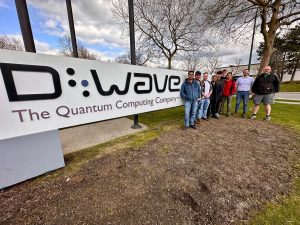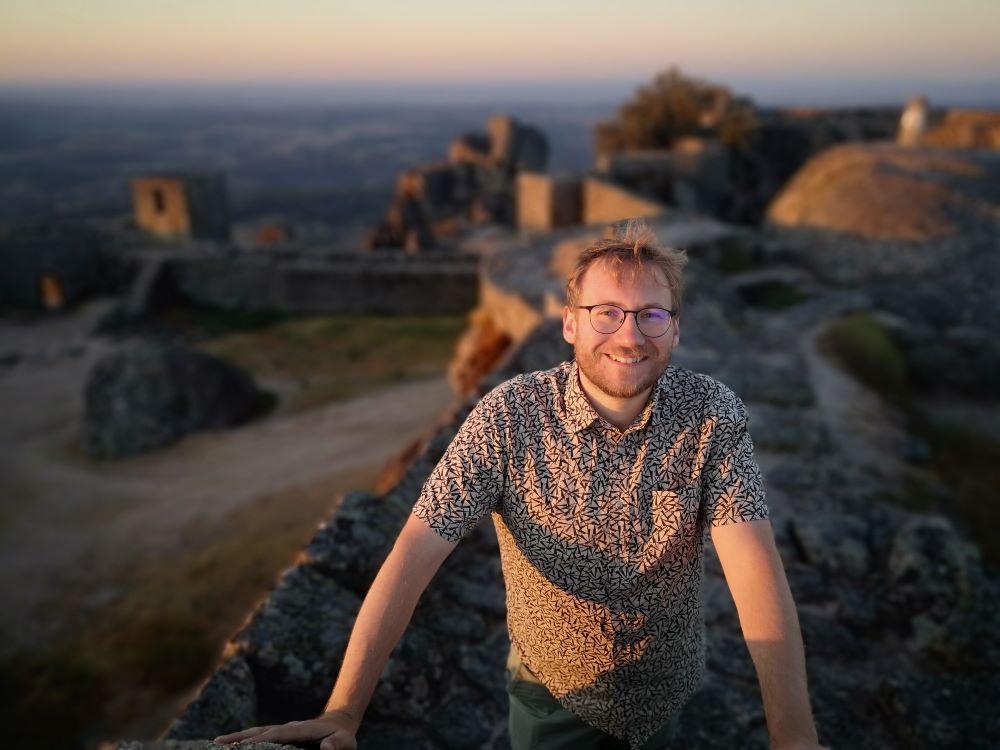Putting people at the core of everything we do is paramount at the British Columbia Institute of Technology. We are committed to ensuring our people — those who make BCIT distinct, are developing while feeling valued, supported, and connected.
BCIT is a people-first organization. We aim to celebrate our employees by sharing their stories through the Our People series. The series features BCIT’s extraordinary employees who share a strong sense of pride and ambition for the Institute and make up our diverse community.
Get to know Michael Harder, Faculty, Physics, School of Computing and Academic Studies, who has been working at BCIT for over five years. Michael teaches foundational physics and critical thinking to future engineers, radiation therapists, and magnetic resonance imaging (MRI) technologists.
What are projects or initiatives that you have completed at the Institute that you are proud of?
I enjoy science outreach and representing BCIT in the broader community, especially through the BC Association of Physics Teachers (BCAPT). This volunteer network supports physics education, for example by facilitating professional development activities.
BCIT actually has a long history with the BCAPT, as three of its five founding members in 1984 were BCIT faculty!
At a recent BCAPT event I chaired a panel “From High School to Post-Secondary, A Physics Conversation”, which included secondary and post-secondary physics educators from various institutions in BC. We wanted to provide a platform to discuss issues surrounding student preparedness, the BC physics curriculum, expectations in post-secondary versus the reality of secondary teaching, and more generally the state of physics education in BC. This is part of a broader discussion about the decline in student preparedness and ability that we have noticed across all the sciences. We are planning to prepare an informal report summarizing the discussion, which we will then use going forward to facilitate further discussions and hopefully develop some ideas to correct the current downward trajectory.
I also enjoy developing new demonstrations and lab activities. Recently, with BCIT Instructional Enhancement Grant (IEG) support, I developed a series of remote labs which use common household supplies and phone sensors to collect data. These efforts helped in the development of an online Physics 12 equivalent course that still emphasizes hands-on skills. The affordability of these activities also benefits high schools, and I’ve been able to lead several workshops to share these methods.
On the research side, a few years ago I had support from BCIT Institute Research Funds (IRF), which afforded me the time to work on several projects related to the interactions between light and magnetic devices. Based on this work I was invited to write a tutorial for the Journal of Applied Physics, which I think has been useful for graduate students and researchers entering the field.
What do you enjoy the most about working in this area of post-secondary education?
Working in post-secondary education allows me to engage in teaching, outreach, and research—all of which I enjoy. Teaching also allows me to continually learn more about physics. At BCIT I have the added benefit of applying my physics expertise across diverse fields in an interdisciplinary setting, which is a lot of fun.
For instance, BCIT recently introduced Canada’s second, first-discipline Magnetic Resonance Imaging (MRI) program, and I co-teach one of its physics courses. Contributing to the development of this course has been exciting, and I recently led a workshop for high school teachers to connect MRI concepts to the BC curriculum, providing example problems and demo ideas. It was also a great opportunity to promote BCIT’s MRI diploma! Teaching into the MRI program has been a rewarding way to blend my teaching, research background in magnetism, and passion for outreach.
LEARN MORE: BCIT Magnetic Resonance Imaging program
Is there an Institute event or initiative that you look forward to every year?
It’s not an annual event (yet!), but this spring BCIT will be hosting a professional development day for high school physics teachers, that I am really looking forward to. We are going to focus on the importance of physics for non-engineering, non-science careers, which I hope will equip teachers to better advise and encourage their students, particularly those struggling with physics.
What has been your most memorable moment working at BCIT?

Through Flexible Learning I have the opportunity to interact with students who are upgrading their high school physics. One of the most rewarding aspects of my work is to teach students throughout their journey: from preparing to enter full time programs, through their studies, and ultimately to see them start new careers. It’s inspiring to witness their growth and achievements over time.
Another memorable experience has been organizing student tours of D-Wave, one of the first quantum computing companies, conveniently located across the street from the BCIT Burnaby campus. I teach a course that focuses on quantum mechanics, and these tours offer students a unique chance to connect the abstract ideas we discuss in the course to real-world applications. Given D-Wave’s proximity and its reputation for hiring engineers, these field trips provide a valuable learning experience that students appreciate.
Share with us how what you are passionate about outside of work. Do you have any hobbies?
I enjoy hiking and backpacking. I also enjoy collecting vinyl records. As a medium, vinyl records allow for a lot of creativity, and they also require a lot of interesting physics! In fact, one day I would love to develop a course focused entirely on the physics of vinyl records.
Come Grow with Us. Explore rewarding career opportunities at BCIT.
